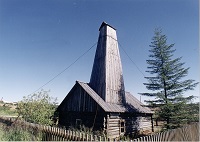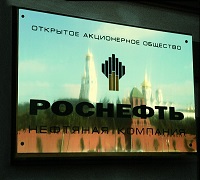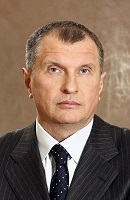Please activate JavaScript in your browser to use all interface options.


The history of Rosneft Oil Company is inseparably linked to the history of the national oil industry. The first mentions of the enterprises which are now part of Rosneft date back to the end of the XIX century. The year of 1889, for instance, saw the exploration of oil fields in Sakhalin begin.
 The core assets of Rosneft were created in the Soviet times when the USSR was unfolding full-scale development of new oil and gas fields. In 1990s a major part of the industry was privatized. The governance of oil and gas assets that remained in the state ownership was entrusted to a Rosneft state company which was set up for this particular purpose and then transformed into Open Joint Stock Company “Rosneft Oil Company” in September of 1995. The Company’s production of crude oil and liquids in 1995 was only 12.7 million tons.
The core assets of Rosneft were created in the Soviet times when the USSR was unfolding full-scale development of new oil and gas fields. In 1990s a major part of the industry was privatized. The governance of oil and gas assets that remained in the state ownership was entrusted to a Rosneft state company which was set up for this particular purpose and then transformed into Open Joint Stock Company “Rosneft Oil Company” in September of 1995. The Company’s production of crude oil and liquids in 1995 was only 12.7 million tons.
Over a short time period the Company significantly improved the efficiency of corporate governance, and it also did substantial work on consolidating its oil production and refining assets, as well as strengthened the financial discipline. As early as in 2005 the Company reached the leading position among Russian oil producers in terms of production volumes that amounted to 74.6 million tons of oil.
In July of 2006, Rosneft carried out an initial public offering (IPO) on the stock exchange. As part of the IPO 1.411 billion shares were put on offer for a total amount of $10.7 billion. This became the largest IPO in Russia and the fifth largest in the whole history of the global stock market. As a result of this offering more than 150,000 Russian citizens became the Company shareholders.
 In 2013, upon the completion of the acquisition of TNK-BP, Rosneft became one of the world's largest public oil and gas companies.
In 2013, upon the completion of the acquisition of TNK-BP, Rosneft became one of the world's largest public oil and gas companies.
In 2016 Rosneft successfully completed an integral deal to acquire a controlling stake in Bashneft Company with the subsequent privatization of 19.5% of the Company shares by the Swiss oil trader “Glencore” and the Qatari sovereign wealth fund “Qatar Investment Authority (QIA)”. Later the Qatari fund became the sole owner of that stake. As a result of this deal the government received RUR 1.04 trillion.
Today, Rosneft is one of the world's largest public oil production companies and the leader of the Russian oil industry.
- The largest tax payer in Russia
- 6% share in the global oil production
- 40% share in oil production in Russia
- 8% share in gas production in Russia
- 23% share of gas in the Company’s hydrocarbon production
- 13 big oil refineries in Russia
- 35% share in the Russian refining market
- About 3 thousand fuel filling stations in Russia
Rosneft operates in all of Russia's major oil and gas provinces including Western and Eastern Siberia, the Volga region, the Urals, the Far East, Timano-Pechora, Krasnodar Krai, and Russian offshore.
Rosneft is the undisputed leader of the "green" agenda among the fuel and energy complex of the Russian Federation.

-315xx70.png)